The monarch butterfly’s colorful appearance is instantly recognizable, but its distinctive coloration appears even before its wings do. The yellow, black, and white stripes of monarch caterpillars are wonders of nature’s colorful diversity, but they also serve a purpose. The vibrant and unmistakable colors of both the caterpillar and the butterfly are warnings to potential predators. Monarch caterpillars and butterflies would likely be the last meal a predator would ever eat, and this danger can be traced back to the monarch caterpillar’s diet.
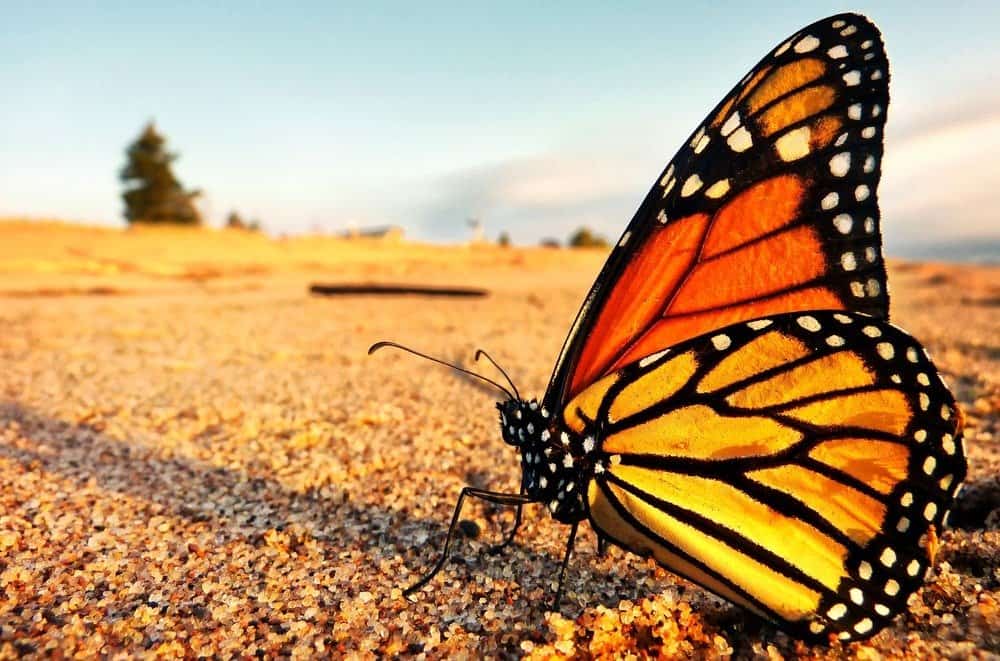
The monarch
butterfly
‘s coloration is unmistakable.
©Chris Frost/Shutterstock.com
What Do Monarch Caterpillars Eat?
Monarch caterpillars eat milkweed. That’s it. This plant makes up 100% of the monarch caterpillar’s diet. It also provides a natural defense against predators the insect will utilize its entire life.
Milkweed is critical to every stage of a monarch’s development. The butterfly will lay eggs on milkweed plants. When the eggs hatch, the baby caterpillar (larvae) feeds on the milkweed. Once the caterpillar is fully grown, it will attach itself to the milkweed plant to begin its metamorphosis, forming a chrysalis. It all takes place on the milkweed plant. Without this plant, monarchs could not survive.
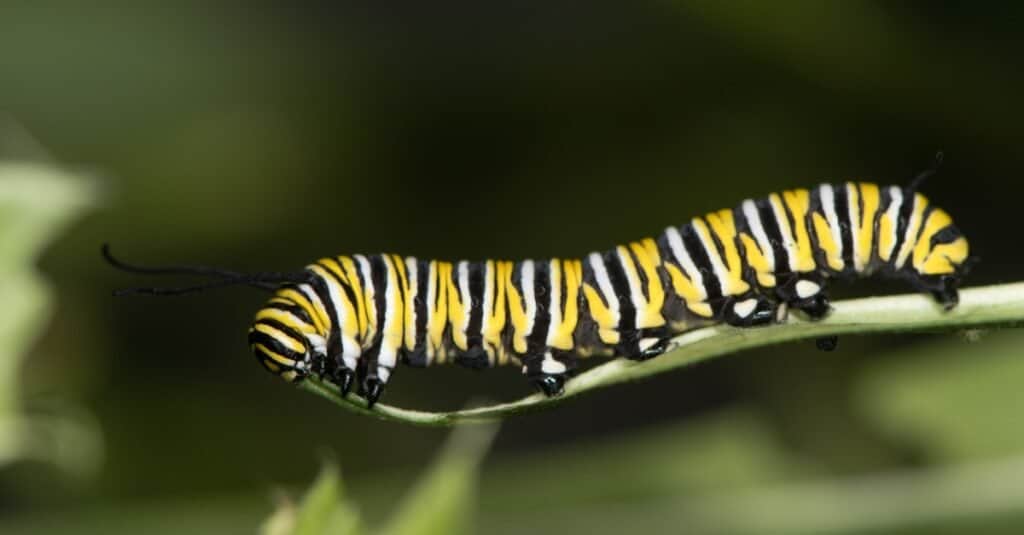
The monarch caterpillar feeds only on milkweed.
©iStock.com/Ian_Redding
Both Food and Protection
All varieties of milkweed contain cardiac glycoside compounds. These toxins are found in all parts of the plant, making milkweed toxic both to humans and animals. In small doses, these toxins can cause nausea, diarrhea, confusion, and weakness. In larger amounts, they can cause seizures, respiratory paralysis, heart issues, and even death. Yet, this poisonous wildflower is the only food source for monarch caterpillars.
Monarchs use milkweed’s toxicity to their advantage. The caterpillars consume these toxins as they feed on milkweed, and the poison compounds are then stored in their bodies. These toxins would poison, and likely kill, any predator who chose to prey on monarchs. As noted earlier, the bright coloration serves as a warning to these would-be predators.
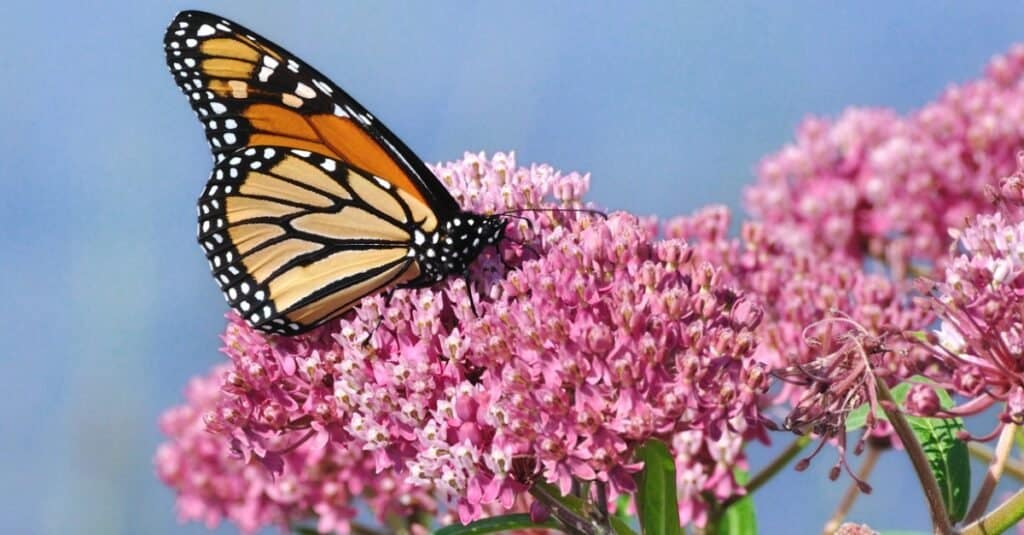
Milkweed is critical for the monarch through every stage of its life.
©iStock.com/herreid
Planting Milkweed in Your Garden
The name “milkweed” is a bit unfortunate, considering it is not a weed at all. It is a flowering plant that attracts pollinators such as bees and, of course, butterflies like monarchs. An increasing number of gardeners are choosing to include different milkweed varieties in their displays, which provides a huge boost to monarchs.
While the monarch caterpillar’s diet consists only of milkweed, there are many different milkweed varieties. You can add these plants to your garden or property to create both a unique display and as an attractant for lovely monarchs.
It’s important to know which variety of milkweed is best suited for your region. Some species, such as honeyvine milkweed (Ampelamus albidus), spread vigorously and would likely not be a wise choice for a small garden or yard space.
It’s also crucial to avoid tropical milkweed (Asclepias curassavica). While easy to grow, this species contains a parasite that is harmful to monarchs.
The Monarch Joint Venture (MJV) is a nonprofit organization building a national partnership of federal and state agencies, other nonprofits, community groups, businesses, and academic programs working together to conserve monarch butterflies and other pollinators. MJV recommends the following milkweed species for different regions of the United States. Use the scientific name of the plant to ensure you choose the right milkweed for your property.

If you plant milkweed in your garden, monarch caterpillars may very well show up to thank you!
©iStock.com/Janice Chen
Northeast/Midwest Region
Common milkweed (A. syriaca), butterfly weed (A. tuberosa), swamp milkweed (A. incarnata), whorled milkweed (A. verticillata) and poke milkweed (A. exaltata).

Common milkweed is the most widespread milkweed species in the United States.
©iStock.com/mr_coffee
Southeast Region
Butterfly weed (A. tuberosa), white/redring milkweed (A. variegata), whorled milkweed (A. verticillata), white swamp milkweed (A. perennis), and sandhill/pinewoods milkweed (A. humistrata).
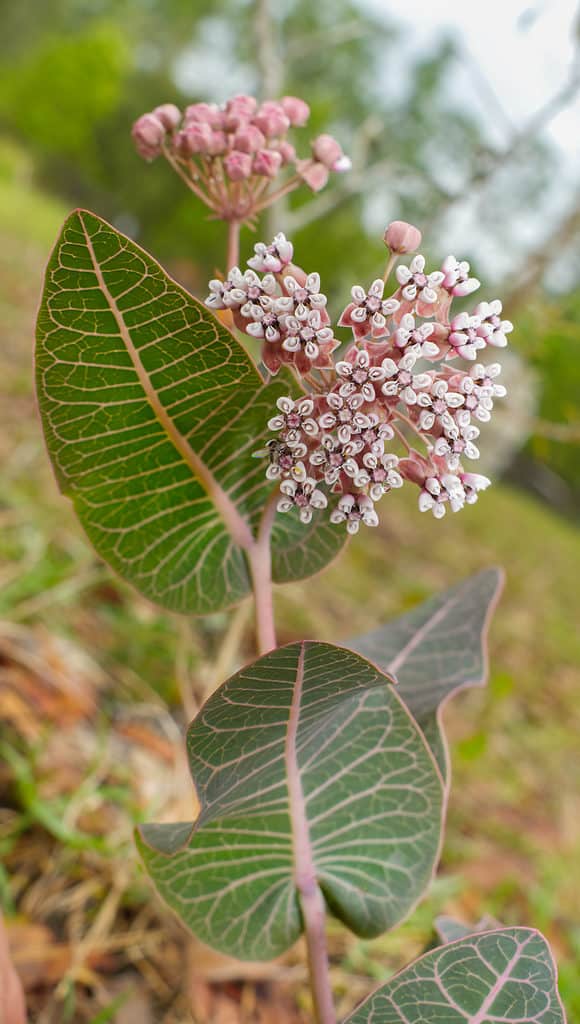
The sandhill/pinewoods milkweed is one of the top recommended milkweed species for the Southeast United States.
©iStock.com/Chase D’animulls
South Central
Green milkweed (A. viridis), antelope-horns milkweed (A. asperula), and zizotes milkweed (A. oenotheroides).
Western (Not Arizona and California)
Mexican whorled milkweed (A. fascicularis), and showy milkweed (A. speciosa).
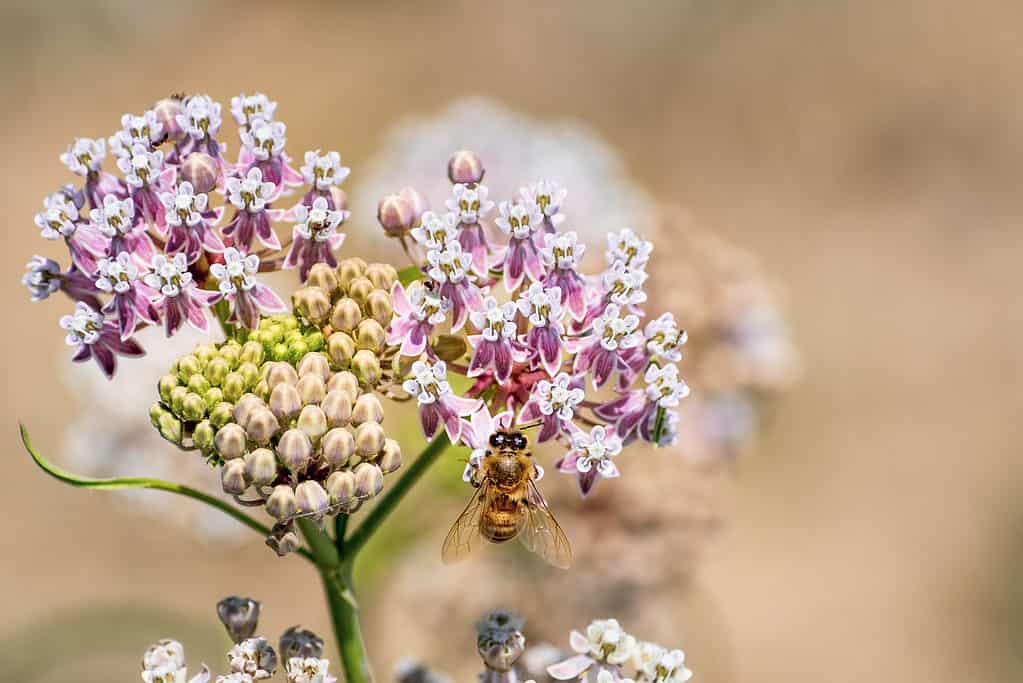
Mexican whorled milkweed attracts lots of pollinators, not just butterflies.
©iStock.com/Sundry Photography
California
Mexican whorled milkweed (A. fascicularis), showy milkweed (A. speciosa), heart leaf milkweed (A. cordifolia), woolly milkweed (A. vestita), desert milkweed (A. erosa), California milkweed (A. californica), and woollypod milkweed (A. eriocarpa).
Arizona
Butterfly weed (A. tuberosa), rush milkweed (A. subulata), antelope-horns milkweed (A. asperula), and Arizona milkweed (A. angustifolia).
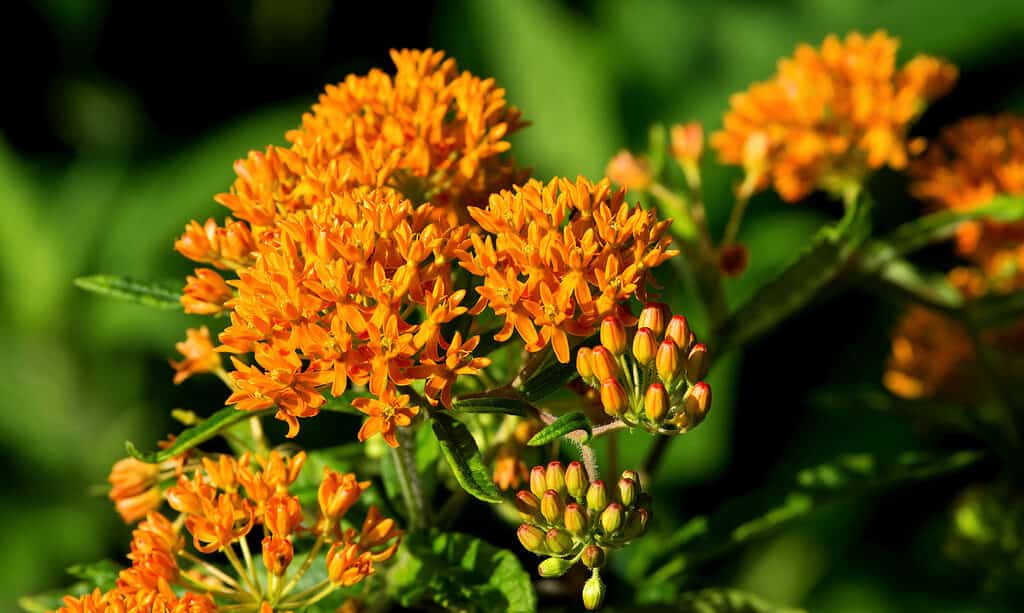
Butterfly weed is a species of milkweed native featuring clustered orange or yellow flowers.
©iStock.com/McKinneMike
The photo featured at the top of this post is © iStock.com/CathyKeifer
Thank you for reading! Have some feedback for us? Contact the AZ Animals editorial team.







